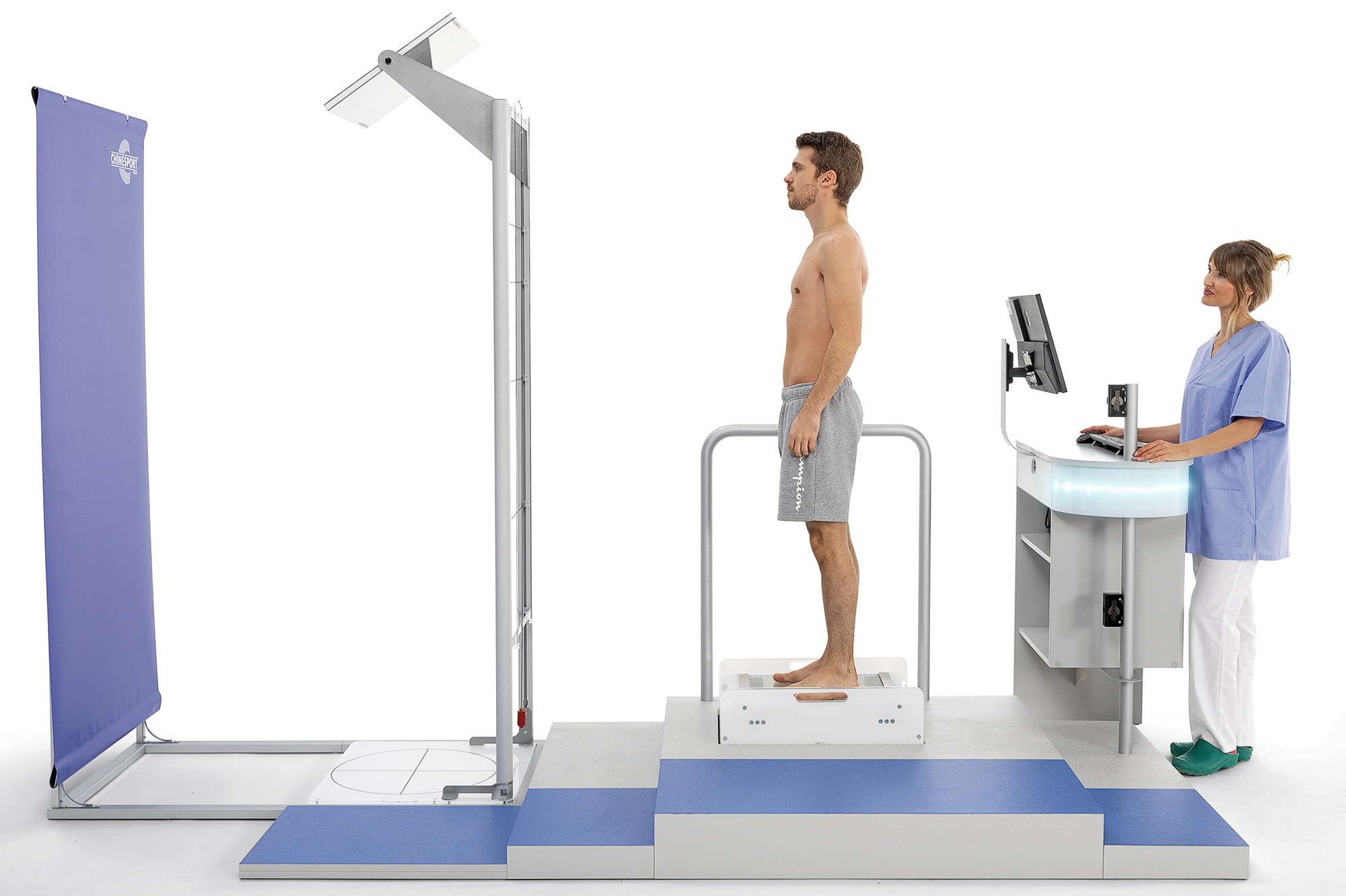Whether specialists or centers are exclusively or mainly interested to feet analysis and podalic support, laboratories are available with a specific platform.
In particular, this platform called Podata is unique and original, and allows two levels of analysis. A first level of static analysis is based on the acquisition of the real-size person’s feet picture in mono or bi-podalic. The acquisition of feet picture therefore allows an identification of the type, whether normal, hollow or flat foot. It is possible then, always at this stage, to carry out measurements and save them together with the picture itself in the electronic patient record for comparison with results in different moments.
The second level of analysis involves the acquisition of stabilometric data such as the gravity center of the subject under examination, and its position compared to the ideal one. It is also detected the body weight distribution on the two feet, and for each foot on the three reference points of the first metatarsal, fifth metatarsal and heel (Kapandji reference).
During the stabilometric tests further informations are then collected about subject fluctuations in the front / rear and lateral axes (the stabilogram), with one representation of the so-called “sway graph”, and distribution of oscillation frequencies.
The same platform can therefore be configured differently, for a static analysis of the feet only (PL0110), or also dynamic and balance (PL0750).
In case of initial purchase choice for a static feet analysis laboratory only, system can be implemented in a second moment by adding dynamic and balance analysis parts. The laboratory therefore has its own scalability.
The platform must, however, return to factory for necessary hardware and software adjustments.
Second stage

The subject could be invited to move on the platform for the analysis of the feet, in static or dynamic mode and in search of balance. The height of the platform is reduced to facilitate the accessibility, and a safety handrail is a useful reference near the patient during the examination, in case of need. Is characterizing of our platform the possibility of setting the test duration. This makes possible to carry out also tests with biofeedback exercises and patient can check his progress on a big screen connected to the PC, and can therefore interact in correction.